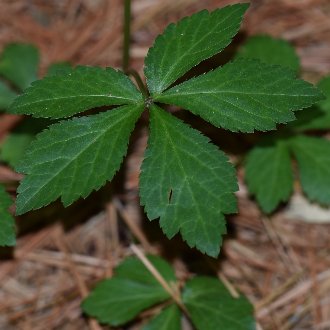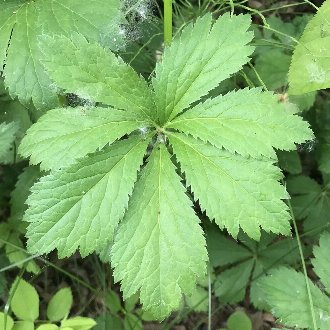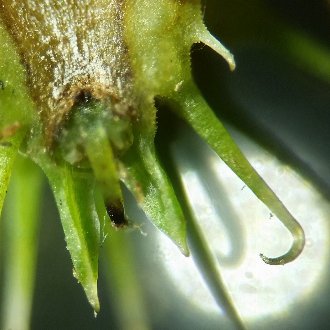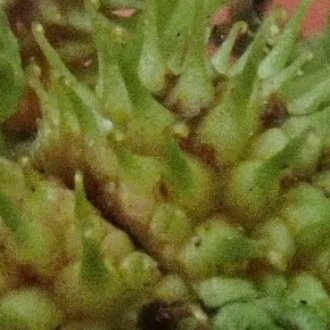Canadian Blacksnakeroot vs Maryland Sanicle
The members of the Sanicula genus are notoriously hard to distinguish. These two species have overlapping fruit sizes, and significant overlap in habitat, but are usually identifiable at a glance by the shape of their basal leaves and the structure of their inflorescence. It is harder to see but there is also a difference in whether or not the fruits are sessile. S. canadensis becomes more common and widespread farther south and prefers soils richer in organic matter, whereas S. marilandica prefers sloped terrain and rockier soils, especially limestone, and becomes more common farther north.
Canadian Blacksnakeroot (Sanicula canadensis) | Maryland Sanicle (Sanicula marilandica) |
A biennial of rich woodlands, native to eastern North America. | A biennial of rich woods, particularly slopes, native to the northern and high-elevation portions of both eastern North America and the interior west. |
Flower clusters inconspicuous, visually dominated by bur-like structures which are the ovaries of perfect or pistillate flowers in the cluster. This reflects the staminate flowers being tiny, on very short (<2mm) pedicels, and there usually only being 2-6 staminate flowers per cluster. Photo © Niki Robertson, CC BY 4.0. | Flower clusters showier at a glance, bur-like structures masked inside a globe-shaped cluster of greenish-white flowers, reflecting more numerous and larger staminate flowers, these flowers being on longer pedicels, and having far-spreading anthers. Photo © botany08, CC BY 4.0. |
Basal leaves usually have 3 leaflets, with the two closest to the base deeply-cut, leading to a 5-leaflet-like appearance. Basal leaves are occasionally fully divided into 5 leaflets. Photo © Blake Bringhurst, CC BY 4.0. | Basal leaves usually have 5 leaflets, with the two closest to the base deeply-cut, leading to a 7-leaflet-like appearance. Basal leaves occasionally are fully subdivided into 7 leaflets. Photo © Caleb Catto, CC BY 4.0. |
Fruits are on a short stem (1-1.5mm long) making bases of fruits look slightly more separate at a glance. Photo © Zihao Wang, CC BY 4.0. | Fruits are sessile (with no stem) leading fruit clusters to have more bunched-up appearance at a glance. Photo © Mary Krieger, CC BY 4.0. |
Base of fruit bristles are broadened, but not bulbous. Photo © Zihao Wang, CC BY 4.0. | Base of fruit bristles are conspicuously bulbous. Photo © Lynn Harper, Public Domain. |
References & External Resources
These short lists show only links helpful for ID. For a complete list of references and resources also covering other aspects of ecology, visit the links section of the full article on each plant, which is the first entry here.










